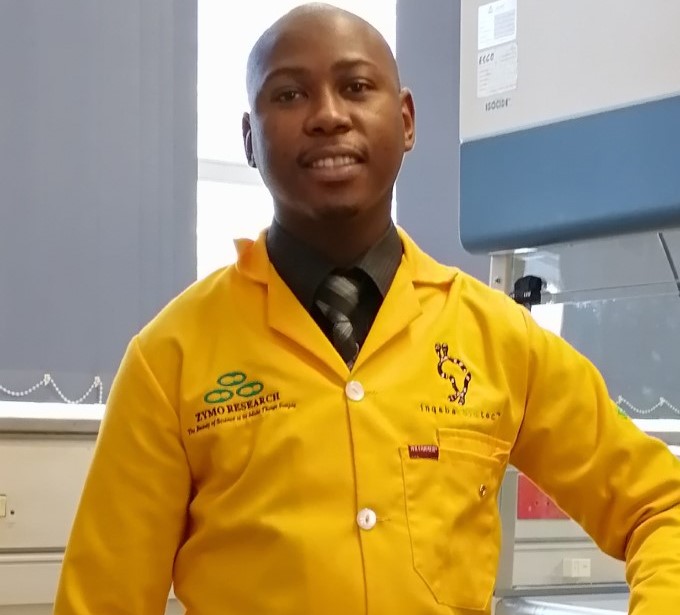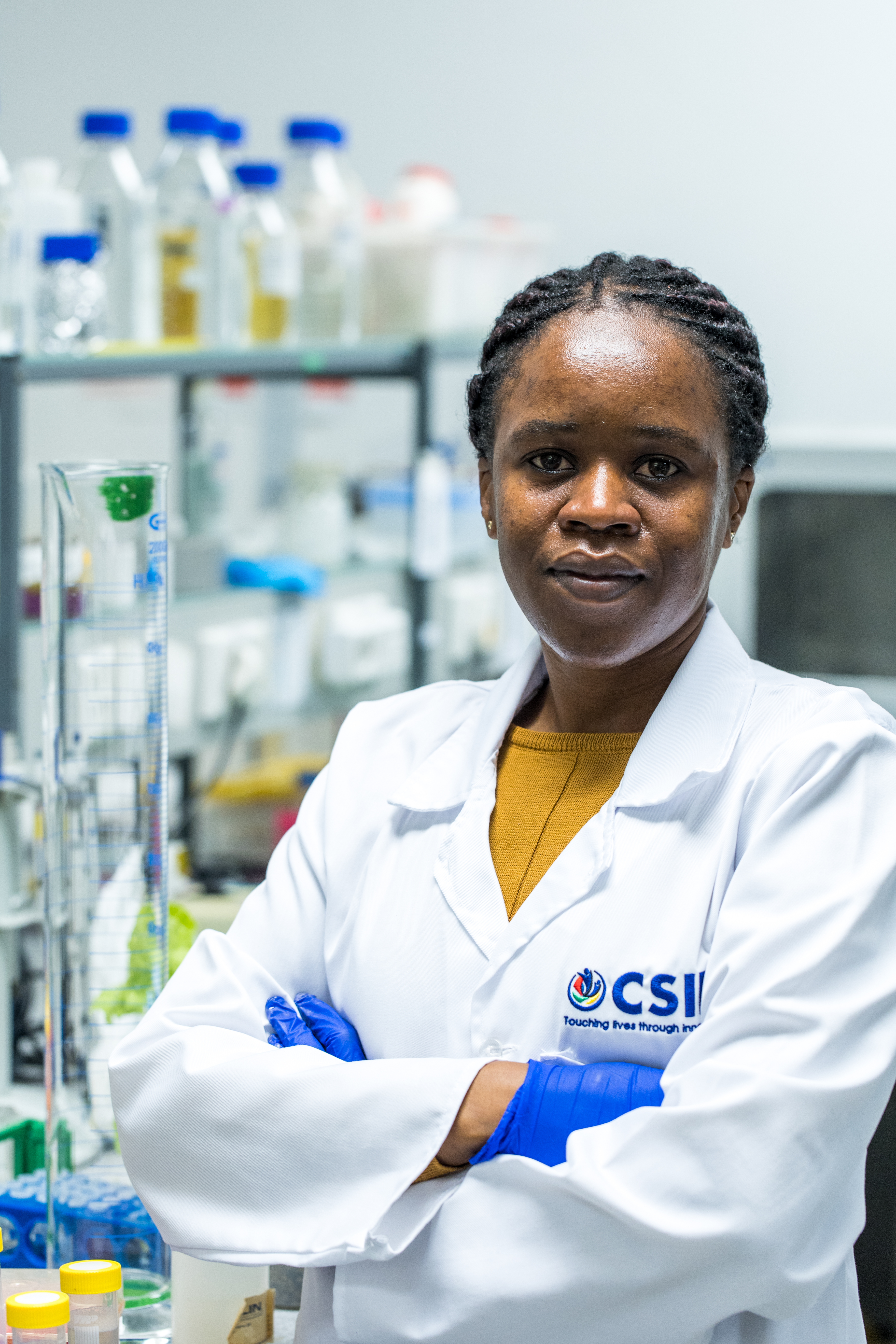Advanced Search
Search Results
Teboho Mooko
Full Profile
This presentation forms part of Teboho Mooko’s PhD study results. It addresses possible factors contributing to HIV-1 shedding into peritoneal dialysis effluent in end-stage kidney failure patients while on antiretroviral and renal replacement therapies. Furthermore, the innovative antiretroviral therapeutic stratagems in HIV control amongst patients on renal modality will be discussed. The research observations are intended to help improve current antiretroviral therapy dosing guidelines and clinical practices to prioritise high-risk patients, improve care and reduce treatment costs.

Moshokoa Nthabiseng Abigail
Full Profile
This study aims to activate different combinations of phases and deformations mechanism in the designed binary Ti-Mo alloys using the d-electron methods and Molybdenum equivalence. The four designed binary alloys: (Ti-xMo, x= 10.02, 10.83, 12.89 and 15.05 Wt% Mo) were fabricated using the commercially available arc re-melting furnace. To evaluate the accuracy of the two theoretical predictions, different characterization methods such as the X-ray diffraction (XRD), Optical microscope (OM) and Electron Backscatter Diffraction (EBSD) were used to evaluate the phases and microstructures of the binary alloys. Uniaxial compression tests were performed at room temperature to measure the strength and the Micro-Vickers hardness of the compressed samples were analyzed using the Micro-Vickers Hardness Tester. The X-ray diffractions patterns showed peaks belonging to orthorhombic martensitic (αʺ) and BCC (β) phase, and the EBSD phase maps showed the (omega) ω phase. Three deformation mechanisms were observered from OM and EBSD as: thin parallel plates referred as Stress Induced Martensite (SIM), wide bands (Twining), and wavy thin lines (Dislocation slips). The most dominant deformation mechanisms which was of dislocation slip and twining was found in Ti-15.05 Mo alloy. The highest compressive strength was found in Ti-15.05wt% Mo (1193.09 Mpa) while the Micro-Vickers and the elastic modulus of the decreased with an increase in Mo content. This showed that Ti-15.05Mo have the potential to be used in biomedical application.
Tshele Mokhantso
Full Profile
HIV-1 protease (HIV-1 PR) is vital for the maturation of HIV-1 and as such, it is an attractive drug target. The introduction of new mutations in arising variants may alter drug binding efficacy and as a result, the development of improved protease inhibitors is of importance. We conducted molecular simulations to determine how non-active site polymorphisms affect the structure, stability and drug interactions of a novel South African HIV-1 PR. The findings revealed how non-active site mutations decrease the conformational stability of key regions in the protease, which may reduce drug binding and may contribute to drug resistance.

Mamabolo Mashaole Stuart
Full Profile
Tin dioxide (SnO2) and vanadium pentoxide gas sensors were fabricated to detect carbon monoxide (CO) gas at 75 ºC. SnO2 exhibited a high response to CO gas, SnO2 gas sensor selected CO gas in the presence of five gases such as methane, Hydrogen sulfide, ethanol, methanol and Nitrogen dioxide. SnO2 sensor showed the lowest Limit of Detection (LoD) compared to its counter, the lower LoD could be used to detect CO gas at the lowest parts per billion concentrations.

The recently launched PotholeFixGP mobile application (app) has already recorded 4 861 downloads on the Google Play Store, with 1547 potholes reported by users so far. The app, a collaboration between the Gauteng Department of Roads and Transport (GDRT) and the Council for Scientific and Industrial Research (CSIR), signals a commitment to the digitalisation of the transport sector as it facilitates enhanced accountability by the GDRT and other roads authorities in the province.
Sibongile Mtimka
Full Profile
The study is on finding novel alternatives to the looming antibiotic resistance crisis. Phage lytic proteins have evolved to degrade bacterial cell wall components and are attractive alternative antibiotics. South African indigenous microbial diversity hotspots are a treasure trove for the discovery of novel enzymes. From this, we have identified candidate lytic proteins and have demonstrated preliminary biological activity against one of the ESKAPE (Enterococcus faecium, Staphylococcus aureus, Klebsiella pneumoniae, Acinetobacter baumannii, Pseudomonas aeruginosa, and Enterobacter spp) pathogens.

Busisiwe Kota
Full Profile
Climate change is one of the biggest challenges facing the agricultural sector and it is highly influenced by human population growth. As such, prolonged drought periods, increased temperatures and salinity are expected, and these will have a negative impact on crop yields. To help alleviate the impact and improve crop production, the use of plant growth-promoting bacteria as microbial inoculants is proposed as a sustainable and environmentally conscious approach. This study aims to develop microbial inoculants from actinobacteria isolated from indigenous southern African medicinal plants Aloe ferox and Sutherlandia frutescens and investigate their impact on plant growth and protection under normal and stressed (osmotic and salinity stress) conditions.

Akhona Madasa
Full Profile
A new and improved irrigation scheduling system is needed for farms in Mutale. This study will formulate a framework for water productivity in agriculture and the Mutale cropland farms with special attention paid to the efficient utilisation of water, i.e. appropriate irrigation scheduling. To do so, a model for water productivity and enhanced crop yield will be used. This model is known as AQUACROP. Machine learning techniques and UAV data will be used to make this possible. Moreover, the sustainable water application will be used to employ new water management strategies to provide an adequate amount of quality water for current and future generations. This aims at reducing the volume of water being used by increasing the water productivity and improving the irrigation scheduling system, which will determine the correct amount of water to use and when.

Dr David Tshwane
Full Profile
Ti-Al-V alloys have become the most widely used alloys and have piqued the interest of many industries, including electronics, gas turbines, automobiles, aerospace, energy, chemical and biomedical applications. However, these alloy materials have inherent limitations such as surface roughness, porosity and a high affinity for oxygen. Because of the surface instability and roughness, the material's application is limited. Computational modelling and simulation have been employed to investigate the surface oxidation and corrosion mechanism on Ti2AlV (110) surface.
Computational and atomic simulation models are used to probe what happens at the atomic scale in solid, gas and liquid states. Surface properties are especially important because of their diverse applications, which include catalysis, physical and chemical surface conditions, and theoretical analysis of metallic surfaces requires extensive knowledge of electronic structures.

Laing Lourens
Full Profile
There are currently many devices in the market that are being produced with different operating systems (e.g. Android, iOS and Raspberry Pi OS) and each type of device has a different screen size and shape. The cost of developing different applications for every possible platform means that there is an increased resource cost associated with each project, as well as added technical complexities and dependencies. However, there are multiple approaches to cross-platform development that allow developers to maintain one codebase for an application that can be accessed from multiple devices using different operating systems. This talk will explore some of these approaches and will showcase some examples of such technologies.


